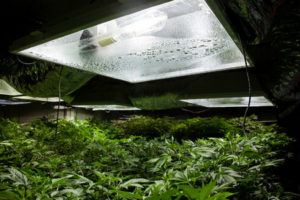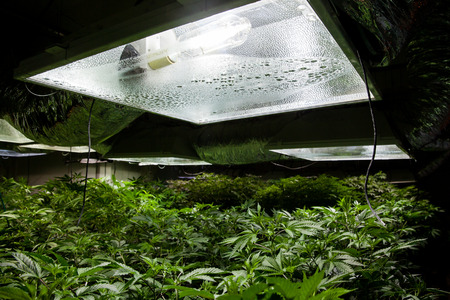
In 2015, two Colorado marijuana users sued the state’s largest marijuana grower, claiming it used a dangerous agricultural fungicide on its pot plants. The fungicide, Eagle 20, contains the chemical myclobutanil, which becomes poisonous when ignited. The allegations were that while Eagle 20 is approved for certain edible products, it is not approved for smokable products like marijuana and tobacco. The lawsuit said: “Persons who smoke cannabis that has been sprayed with Eagle 20 inhale … poisonous hydrogen cyanide.” The company, LivWell, maintained its plants are safe.
The two individuals alleged they were not aware of LivWell’s use of Eagle 20 on their cannabis when they bought it. Had they known, they would not have smoked LivWell’s cannabis. They were asking for a monetary reimbursement for their unused product and were also demanding that LivWell stop using the Eagle 20 fungicide on its cannabis. The plaintiff’s lawyer said that to his knowledge, this was the first product liability action filed against the legal marijuana industry. LivWell’s owner said: “Testing of our finished product by an independent, state-licensed lab approved by the City of Denver showed that our products are safe – as we have always maintained.”
In the end, the lawsuit was dismissed. The Denver judge who heard the case said the plaintiffs couldn’t sue because they were not actually harmed. They bought and then consumed the pot without any repercussions. The written opinion noted there were no allegations that the cannabis did not perform as it was supposed to; and both consumers smoked it without harm. LivWell’s owner said this had been a ploy intended to smear the company’s name. “The people behind this case do not want the commercial cannabis industry to succeed and will try anything to bring down the industry.”
Setting aside the rhetoric from the lawyers on both sides of the dismissed lawsuit and LivWell’s owner, the use of pesticides on marijuana is a growing concern for the industry. The marijuana website The Cannabist has an archived page on marijuana pesticides with fourteen articles published between December 4, 2015 and July 29, 2016. Their titles range from: “Check Your Stash: Are you consuming pesticide-peppered pot? Full recall list” to “State releases hundreds of recalled pot batches after they tested pesticide-free.”
Ricardo Baca and others, writing for The Cannabist, said Denver’s Department of Environmental Health has issued 26 recalls of marijuana and pot products since September of 2015. The Colorado Marijuana Enforcement Division has issued 26 recalls in the form of administrative holds between February and July of 2016. The recalls originated from an executive order issued by the governor of Colorado in November of 2015. Within the order, the governor said: “Until scientific assessment establishes which additional pesticides can be safely applied to marijuana, marijuana contaminated by an Off-Label Pesticide shall constitute a threat to the public safety.”
At the core of legal cannabis’ pesticide problem in Colorado is the state’s lack of a pesticide certification for marijuana testing labs. So while cannabis testing facilities are certified by the state’s health department to test for potency and contaminants, the Colorado Department of Public Health and Environment is still working with other agencies, labs and industry to develop proficiency standards and testing certification requirements for pesticide tests.
Reporting originally for The Denver Post, David Migoya and Ricardo Baca, noted how The Post revealed in its own testing that a number of marijuana-infused products contained high levels of pesticides that shouldn’t be used on cannabis. The Catch-22 is that there is no pesticide specifically approved for use with marijuana, because pesticide chemicals are regulated by the EPA. And since cannabis is illegal under federal law, there are no federal standards. “As a result, there have been no tests to show how pesticides used on marijuana could affect consumers or whether their use is safe.” Colorado state agriculture officials have allowed certain pesticides to be used on marijuana as long as it does not violate the restrictions of the product’s label.
Ron Kammerzell, a senior director in the Colorado Department of Revenue, which oversees the state Marijuana Enforcement Division (MED), said the state’s responsibility was to make sure the marijuana is safe for the consumer and not contaminated by pesticides. The top priority is to keep pesticide-contaminated products from getting to consumers. He added that pesticides were a challenging area fro testing, so they wanted to be sure they did it right. “Once we have mandatory testing for pesticides, that will be a game-changer in terms of making sure that we’re minimizing these types of contaminations.” Kammerzell hopes to have the state’s pesticide testing certification program implemented sometime in 2017.
Writing for Slate, Rachel Gross noted how cannabis vendors are pitching healthier, organic marijuana to their customers. “Like wine aficionados, certain weed smokers have always had a reputation for being connoisseurs.” The U.S. legal cannabis industry was projected to bring in almost $7 billion in 2016. The founder of Clean Green, a marijuana-certifying program, said: “These are sophisticated buyers, the same people who are buying organic food and organic coffee.” The industry is becoming more industrialized and corporate and the fear is that industrial pot is laced with pesticides.
Consider the gram of weed you can buy, right now, in the four states (Washington, Oregon, Colorado, and Alaska) and Washington, D.C., where recreational marijuana is legal (or the 24 states where it’s available for medical purposes). Before it was sealed in that baggie, it was a plant. That plant likely got sprayed with fungus-, insect-, and disease-killing chemicals. Before it was a plant, it was a seedling. That seedling may have sat in soil that had been fumigated with even more pesticides. And before that seedling got planted, the grow room that would one day be its home was probably bug-bombed and lined with pest strips, which are laced with chemicals that linger in enclosed spaces.
Thanks to the series of recalls, like those noted above in Colorado, consumers are becoming more aware of the pesticide issues in the marijuana industry. The Oregonian found abnormally high levels of pesticides in nearly half the products sold in state dispensaries. “Those pesticides included a common roach killer, half a dozen human carcinogens, and a fungicide [myclobutanil] that allegedly turned into hydrogen cyanide when heated.” The dose is the issue. Even a toxic substance like hydrogen cyanide could be harmless in a small enough dose. Oregon is working closely with the state of Washington and Colorado to coordinate which pesticides should be tested for in cannabis.
Researchers at UC Davis recently announced a study that found medical marijuana contained “multiple bacterial and fungal pathogens that may cause serious and even fatal infections.” Smoking, vaping or inhaling aerosolized marijuana may pose a serious health risk to individuals, especially those with impaired immune systems. George Thompson, one of the study’s authors, noted where patients with impaired immune systems are routinely advised to avoid exposure to plants and certain raw foods because of the risk of infection. “But at the same time, they are increasingly turning to medical marijuana to help them with symptom control. Because microorganisms known to cause serious infections in immunocompromised patients were found to be common on marijuana, we strongly advise patients to avoid it.”
They publically voiced their concerns in a letter to the editor of the journal Clinical Microbiology and Infection. There is a copy of the letter here. The news media also picked up on the study. Claudia Black, writing for The Sacramento Bee, said the uneasy news comes as a majority of states have eased laws on medical and recreational marijuana, and a majority of U.S. doctors support the use of medical marijuana for symptoms such as pain, nausea and loss of appetite during chemotherapy and other treatments. George Thompson was quoted as saying it was a big oversight to not warn patients with compromised immune systems to avoid marijuana. “It’s basically dead vegetative material and always covered in fungi.”
The study gathered marijuana from 20 Northern California growers and dispensaries. The analysis of marijuana for the study was done by Steep Hill Labs, a cannabis testing company. “The analysis found numerous types of bacteria and fungi, including organic pathogens that can lead to a particularly deadly infection known as Mucor.” There is a misconception that if it is from a dispensary, the marijuana must be safe. But that’s not the case, according to Joseph Tuscano, another one of the researchers. “This is potentially a direct inoculation into the lungs of these contaminated organisms, especially if you use a bong or vaporization technique.” You can watch a CBS Sacramento news video on the study posted on YouTube here.
So it’s not just that the anti-pot people are out to sink the industry. Its customers are concerned about the presence of pesticides in their pot. Researchers are finding that some marijuana contains common bacteria and fungi that poses a danger to individuals with compromised immune systems. The marijuana industry is going through some serious growing pains. But the question begs to be asked, did the states that legalized recreational and medical marijuana run ahead of the regulatory and bureaucratic changes needed to support it?





